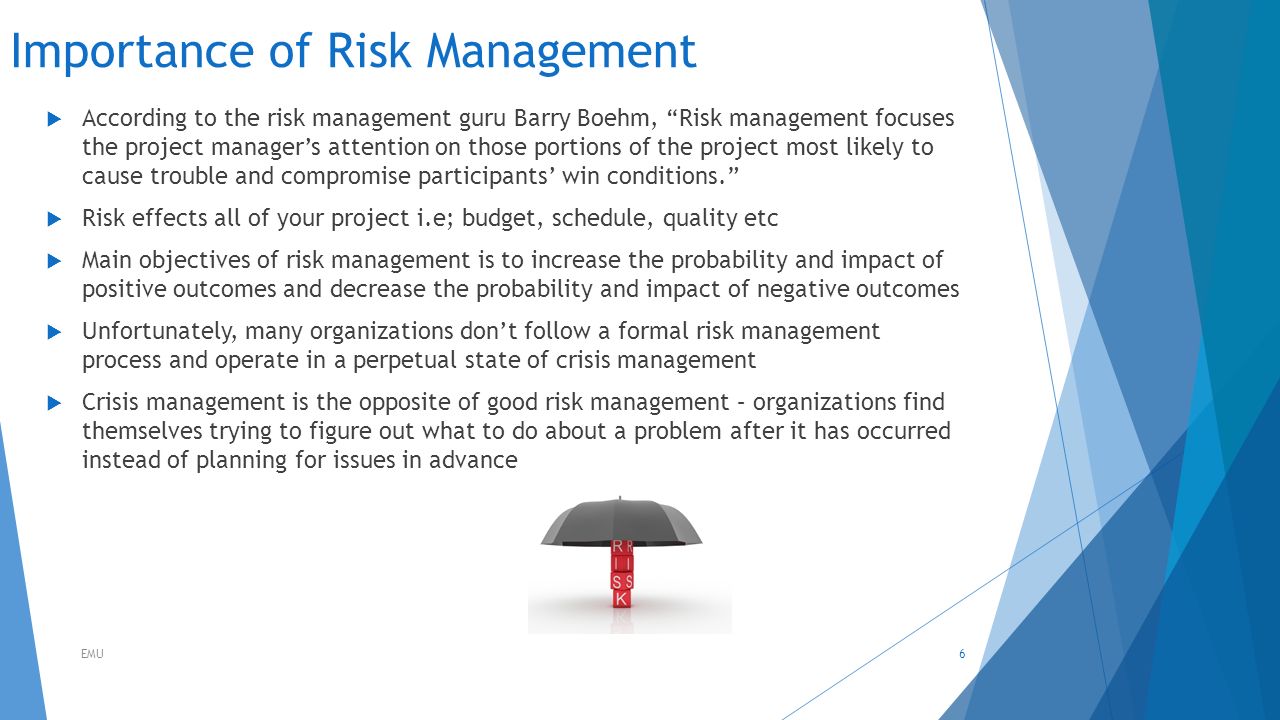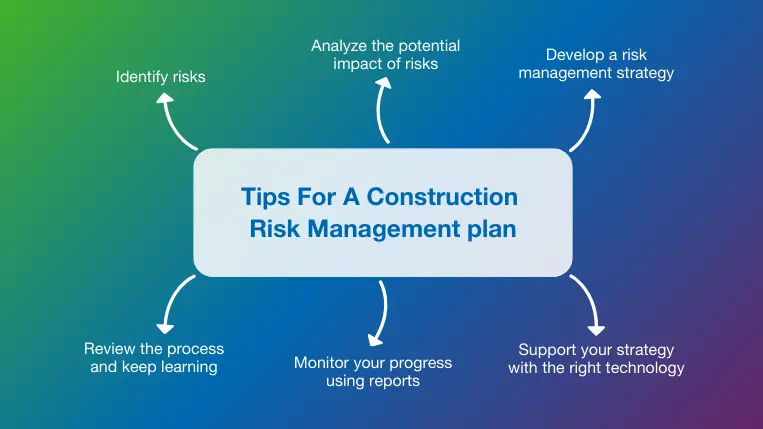How the Importance of Risk Management Facilitates Successful Project Outcomes
How the Importance of Risk Management Facilitates Successful Project Outcomes
Blog Article
Discovering the Importance of Risk Management for Effective Decision-Making Approaches
In the elaborate globe of company, Risk Management becomes a critical consider the decision-making process. The ability to identify potential risks and possibilities, and plan appropriately, can lead to the difference in between success and failure. With tools such as SWOT and PESTEL, companies are geared up to make enlightened choices, cultivating strength and versatility in an ever-changing setting. Wondering exactly how this works? Allow's unpack the characteristics additionally.
Comprehending the Principle of Risk Management
Risk Management, an essential part in decision-making, is frequently misinterpreted or oversimplified. Usually, it refers to the recognition, evaluation, and prioritization of risks to reduce, keep an eye on, and control the chance or impact of unfavorable occasions. Nonetheless, it's not merely about protecting against unfavorable results, however additionally concerning recognizing prospective chances. Risk Management involves disciplined and structured techniques, making use of information and insightful analyses. It calls for a thorough understanding of the company's context, objectives, and the potential risks that could obstruct them. From financial unpredictabilities, lawful obligations, tactical Management mistakes, to crashes and all-natural catastrophes, it deals with various risks. Notably, effective Risk Management is not stationary; it's a continual, positive process that evolves with altering conditions.
The Duty of Risk Management in Decision-Making Processes
In the world of strategic planning and company procedures, Risk Management plays an important function in decision-making procedures. It aids in determining possible dangers and uncertainties that could influence the success of service purposes. By mapping these dangers, business can develop methods to alleviate their impact, guaranteeing service continuity and stability. Risk Management therefore comes to be a vital device in decision-making, assisting leaders to make enlightened options based on a thorough understanding of the dangers included. It encourages an aggressive strategy, making it possible for organizations to anticipate and prepare for possible future situations. This substantially minimizes the chance of negative repercussions, advertising extra effective and efficient decision-making approaches. Risk Management serves as an important part in the decision-making processes of any kind of organization.

How Risk Management Enhances Strategic Preparation
In the context of calculated planning, Risk Management plays a crucial function. Initiating with the recognition of prospective risks, it additionally encompasses the application of Risk reduction procedures. The duty of Risk Management is vibrant however not static, as it requires consistent tracking and adjusting of techniques.
Identifying Prospective Threats

Executing Risk Reduction
Having actually established the relevance of determining potential threats, the following step is to check out Risk mitigation. This procedure entails creating and executing strategies to handle identified dangers properly. It is an important aspect of critical preparation as it improves decision-making by reducing possible unfavorable outcomes. Risk reduction approaches can range from Risk avoidance, Risk transfer, to run the risk of reduction. Each method should be tailored to the certain Risk, considering its potential influence and the company's Risk tolerance. Effective Risk mitigation needs a deep understanding of the Risk landscape and the possible impact of each Risk. This understanding enables organizations to prioritize dangers and designate resources efficiently, making sure that one of the most considerable risks are dealt with initially.
Surveillance and Readjusting Methods
Though Risk mitigation is an important action in calculated preparation, constant tracking and adjustment of these techniques is similarly vital. It also provides a chance to assess the success of the Risk Management actions, allowing modifications to be made where necessary, further boosting critical preparation. Surveillance and changing Risk Management strategies is you could check here a critical element for improving a company's strength and tactical planning.
Case Studies: Effective Risk Management and Decision-Making
In the globe of company and money, successful Risk Management and decision-making usually work as the pillars of prosperous business. One such entity is a multinational oil firm that minimized financial loss by hedging against fluctuating oil rates. In another instance, a technology startup flourished by determining and approving risky, high-reward approaches in a volatile market. An international bank, encountered with regulatory uncertainties, successfully browsed the scenario via positive Risk analysis and vibrant decision-making. These situations highlight the value of sharp Risk Management in decision-making procedures. It is not the absence of Risk, but the Management of it, that typically sets apart effective business from unsuccessful ones. These cases underscore the crucial role of Risk Management in tactical decision-making. importance of risk management.
Tools and Strategies for Effective Risk Management
These devices, such as Risk registers and warm maps, aid in recognizing and analyzing possible risks. Risk reaction methods, a crucial part of Risk Management, include approving, avoiding, moving, or mitigating dangers. With these methods and devices, decision-makers can browse view website the complex landscape of Risk Management, thereby helping with educated and effective decision-making.
Future Patterns in Risk Management and Decision-Making Approaches
As we check out the substantial landscape of Risk Management, it becomes apparent that the methods and tools utilized today will remain to progress. Future fads aim towards an increased dependence on innovation, with expert system and machine knowing playing substantial duties. These innovations will allow organizations to predict possible threats with higher accuracy and make even more enlightened choices. Furthermore, there will certainly be an expanding focus on resilience, not just in taking care of risks however likewise in recuperating from unfavorable scenarios. The principle of Risk society, where every member of a company is aware and involved in Risk Management, will get extra prestige. These trends declare a more positive and inclusive approach in the direction of Risk Management and decision-making.
Verdict

Risk Management hence becomes a vital device in decision-making, helping leaders to make enlightened options based on a detailed understanding of the risks entailed. Risk reduction methods can vary from Risk avoidance, Risk transfer, to risk reduction (importance of risk management). Effective Risk reduction needs a deep understanding of the Risk landscape and the possible impact of each Risk. Risk response strategies, a vital element of Risk Management, involve accepting, staying clear of, transferring, or mitigating risks. The idea of Risk society, where every member of an organization is aware and involved in Risk Management, will gain extra prominence
Report this page